
HOME
INTRO
SYMBOLS
ALMANAC
ECONOMY
GEOGRAPHY
STATE MAPS
PEOPLE
FORUM
NEWS
COOL SCHOOLS
STATE QUIZ
STATE LINKS
BOOK STORE
MARKETPLACE
NETSTATE.STORE
NETSTATE.MALL
GUESTBOOK
CONTACT US


Tennessee State Mineral
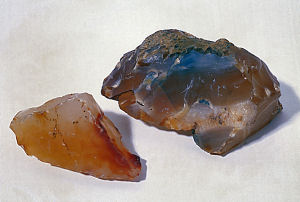
Tenneseess State Mineral: Agate
Credit: The State of Tennessee
The agate was chosen to represent the State of Tennessee twice; first as the state "stone" and forty years later as the state "mineral."
On March 25, 1969, the agate was adopted as the official state "stone" of Tennessee by House Joint Resolution No. 42.
Forty years later, after adoption of an official state gem and an official state rock, the General Assembly thought that some clarification was in order. Specifically, they thought that "stone" was too broad a term. House Bill No. 278 (HB0278) and Senate Bill No. 919 (SB0919) were introduced, in February of 2009, to name the agate the official state mineral.
HB0278 passed in the House unanimously (March 23, 2009) and replaced SB0919 (March 26, 2009).
HB0278 went on to pass in the Senate unanimously (March 26, 2009) and was forwarded to Governor Phil Bredesen for his signature on March 31.
The agate became the official state "mineral" when the Governor signed HB0278 into law on April 2, 2009.
As stated in HB0278, the purpose of this legislation was to correct a "discrepancy involving official state symbols." The discrepancy is clearly explained in the text of HB0278 below.
HOUSE BILL 278
By FincherAN ACT to amend Tennessee Code Annotated, Title 4, Chapter 1, Part 3, to designate agate as the official state mineral.
WHEREAS, House Joint Resolution No. 42 of the 86th General Assembly, adopted March 25, 1969, designated agate as the official stone of Tennessee; and
WHEREAS, the words stone, rock, and gem are used interchangeably in such resolution; and
WHEREAS, a stone may be a mineral, a rock, or even a fossil, by definition; and
WHEREAS, Chapter 42 of the Public Acts of 1979 subsequently designated calcium carbonate, commonly known as limestone, as the official state rock; and
WHEREAS, in reality and by definition, agate is a waxy, cryptocrystalline variety of the mineral quartz in which the colors are present in bands, clouds, or distinct groups; and
WHEREAS, the General Assembly wishes to correct this discrepancy involving official state symbols; now, therefore,
BE IT ENACTED BY THE GENERAL ASSEMBLY OF THE STATE OF TENNESSEE:
SECTION 1. Tennessee Code Annotated, Title 4, Chapter 1, Part 3, is amended by adding the following language as a new Section 4-1-330:
§ 4-1-330
Agate is designated as the official state mineral.
SECTION 2. This act shall take effect upon becoming a law, the public welfare requiring it.
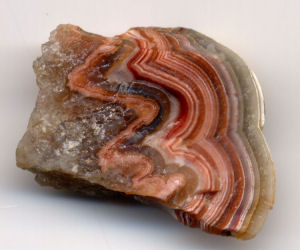
Tenneseess State Mineral: Agate
Credit: The State of Tennessee
Currently, Tennessee has an official state gem, an official state rock, and an official state mineral, but no official state stone. Really?
The agate was declared "official" by action of the Tennessee General Assembly twice but by two different processes. Does the agate serve as both the official state stone and the official state mineral?
Initially, the agate was declared official by House Joint Resolution No. 42. According to the glossary offered online by the Tennessee General Assembly a joint resolution is:
Legislation requesting a study or expressing the views or sentiments of both houses but originating in one house. After passage, the joint resolution (e.g. House Joint Resolution 55 or Senate Joint Resolution 34) is signed by both speakers and the governor.
In 2009, the agate was declared official by House Bill No. 278. According to the glossary:
A bill is proposed legislation introduced to enact a new law or change or repeal an existing law.
We think that the weight of law holds precedent over a resolution that expresses the "views or sentiments" of the legislature and feel that the 2009 law supersedes the 1969 resolution. The agate should now properly be referred to as the state mineral, rather than the state stone. What do you think?
Tennessee Law
The following information was excerpted from the Tennessee Code Annotated, Title 4, Chapter 1, Part 3, Section 4-1-330.
Title 4 State Government
Chapter 1 General Provisions
Part 3 State Symbols
Tenn. Code Ann. § 4-1-330 (2011)
4-1-330. State mineral.
Agate is designated as the official state mineral.
HISTORY: Acts 2009, ch. 30, § 1.
Sources...
The State of Tennessee. Tennessee Code Annotated. Nashville: The State of Tennessee, 2011. Web. 18 Aug 2011. .
Tennessee General Assembly. House Bill No. 278. Nashville:The State of Tennessee, 2011. Web. 23 Aug 2011. .
Shearer, Benjamin F. and Barbara S. State Names, Seals, Flags and Symbols: A Historical Guide Third Edition, Revised and Expanded. Westport, Conn: Greenwood Press, 3 Sub edition, 2001.
Additional Information
Definition of AGATE: Free Merriam-Webster Dictionary.
Agate: The International Colored Gemstone Association.
Agate Facts, Information and Description: Bernardine Fine Art Jewelry, Cincinnati, Ohio.
State minerals: Complete list of official state minerals from NETSTATE.COM.
More symbols & emblems: Complete list of official Tennessee state symbols from NETSTATE.COM.
Jewlry: Agates:
Agate jewelry from Amazon.com; Gold; Silver; Platinum; Stainless Steel.
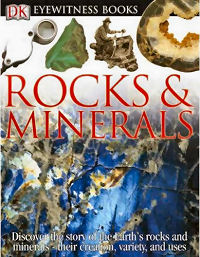
Eyewitness Books: Rocks & Minerals
Eyewitness Books: Rocks & Minerals, by Chris Pellant, R.F. Symes 72 pages. DK CHILDREN (August 2, 2004) Reading level: Ages 9-12. Here is a spectacular and informative guide to the amazing world beneath our feet. Stunning color photographs of rocks, fossils, minerals, precious metals, crystals, jewels and gemstones give the reader a unique "eyewitness" insight into the evolution and composition of the Earth. See rocks that have come from outer space, stalactites as old as dinosaurs, the strange and beautiful shapes of natural crystals and priceless nuggets of gold, silver and platinum. Learn what the Earth is made of - and how its rocks were formed, how early humans made the first flint tools and how diamonds and precious stones are cut, polished, and made into jewelry. Discover how prehistoric animals are preserved today as fossils, how volcanoes work, how rocks are formed from molten lava, how minerals and metals are mined and how pebbles on the seashore are worn down into sand, and much, much more!
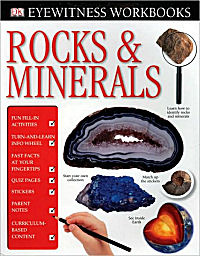
Eywitness Workbook: Rocks & Minerals
Eyewitness Workbooks: Rocks & Minerals, 48 pages. DK CHILDREN; Workbook edition (June 16, 2008) Reading level: Ages 9-12. Perfect for getting ahead at school or just stimulating children's interest, this groundbreaking series of workbooks leaves the competition in the dust, with exciting subjects, 48 full-color pages, a turn-and-learn info wheel, and special carrying folders. Never before have there been workbooks with so many opportunities for fun and interactive learning!
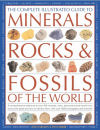
The Complete Illustrated Guide to Minerals, Rocks & Fossils of the World, by John Farndon and Steve Parker. 512 pages. Publisher: Lorenz Books, an imprint of Anness Publishing (June 16, 2010) A comprehensive reference to over 700 minerals, rocks, plants and animal fossils from around the globe and how to identify them, with over 2000 photographs and artworks.
This stunning and expert book provides a complete reference for anyone interested in the earth sciences. Each section of the book starts with an informative introduction explaining how the phenomena have formed and their major defining characteristics, the habitats in which they are typically found and where the best examples are located around the world.
How-to techniques for the amateur geologist and palaeontologist show how to extract samples safely, and how to identify, date and classify them. There are step-by-step instructions on simple home testing methods to gauge rock and mineral colour, hardness, cleavage, lustre, tenacity and transparency. There is practical guidance on the best ways to clean, preserve and then display the specimens to build a superb collection of your own.
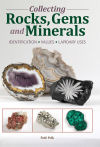
Collecting Rocks,
Gems & Minerals
Patti Polk
Collecting Rocks, Gems & Minerals, by Patti Polk. 272 pages. Publisher: Krause Publications (May 13, 2010) Collecting Rocks, Gems and Minerals takes you from having a casual interest in rocks to being a true collector, and it serves as the only book of its kind to have values for these beautiful offerings from nature.
The easy-to-use, and durable design of this book makes it the perfect guide to use out in the field, and it:
- Covers both lapidary and mineral display materials
- Includes organics such as amber, bone, coral, pearl and shell
- Lists chemical group, system, hardness, opacity, fracture, specific gravity and more
- Provides values and tips for locating, buying and collecting
- Contains 650+ full-color photos
Peterson First Guides: Rocks and Minerals, by Frederick H. Pough. 128 pages. Houghton Mifflin Harcourt (August 15, 1998) Written and designed for the beginner, this book describes and illustrates the most common and interesting rocks and minerals, from simple sandstone to exotic gems. Illustrated with dozens of beautiful color photographs, it tells how these rocks and minerals formed and how to identify them--and includes tips on collecting.
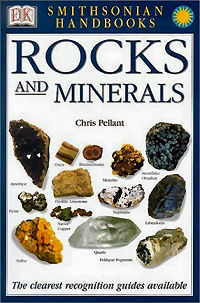
Rocks and Minerals
by Chris Pellant
Rocks & Minerals, by Dougal Dixon. 160 pages. Fireside (August 15, 1992) Beginning with a history of the earth's formation and development, this book explores the substances that compose the planet, movements within the earth, the surface effects of weather and water, and underground landscapes. It shows you how to search for, identify, and extract samples of various rocks and minerals, and for each rock and mineral type there is a brief mineralogy and explanation of its locations. There are also sections on mapping, preparing, and curating specimens, and geological sites on the six continents. Packed with more than 200 full-color illustrations, this comprehensive guide is the essential practical companion for natural science enthusiasts everywhere.
Smithsonian Handbooks: Rocks and Minerals, by Chris Pellant. 256 pages. DK ADULT; 1st edition (September 1, 2002) The Smithsonian Handbook of Rocks and Minerals combines 600 vivid full--color photos with descriptions of more than 500 specimens. This authoritative and systematic photographic approach, with words never separated from pictures, marks a new generation of identification guides. Each entry combines a precise description with annotated photographs to highlight the chief characteristics of the rock or mineral and distinguishing features.
Field Guide to North American Rocks and Minerals, National Audubon Society. 856 pages. Knopf; 1st Edition (5th Printing) edition (May 12, 1979) Perfect for mountain climbers and hikers, this valuable reference covers more rocks and minerals in North America than any other available guide. 794 full-color photographs depict all the important rocks, gems, and minerals -- in many variations of color and crystal form -- and the natural environments in which they occur; written descriptions provide information on field marks, similar rocks and minerals, environment, areas of occurrence, and derivation of names. Includes a guide to mineral collecting and a list of rock-forming minerals

